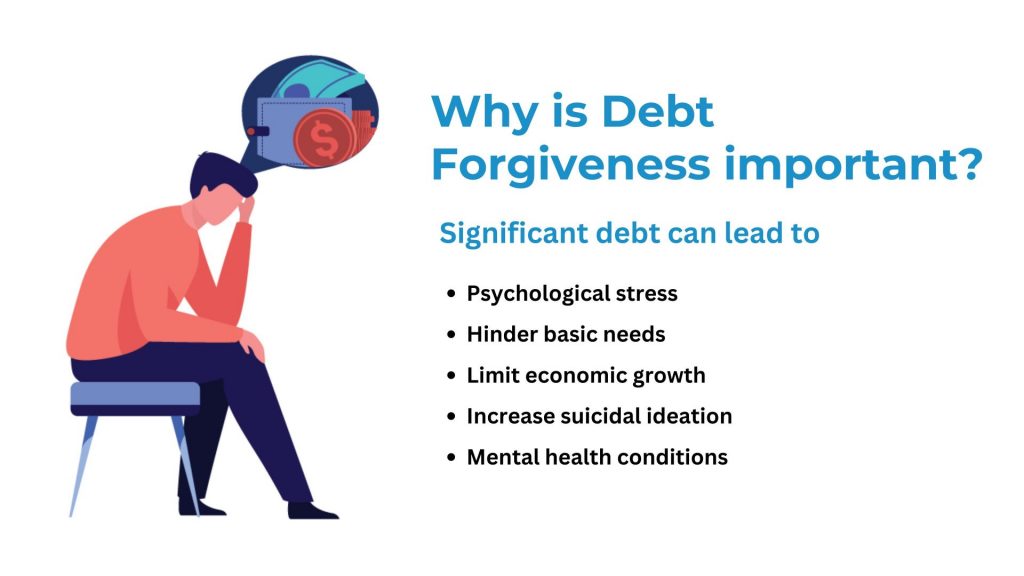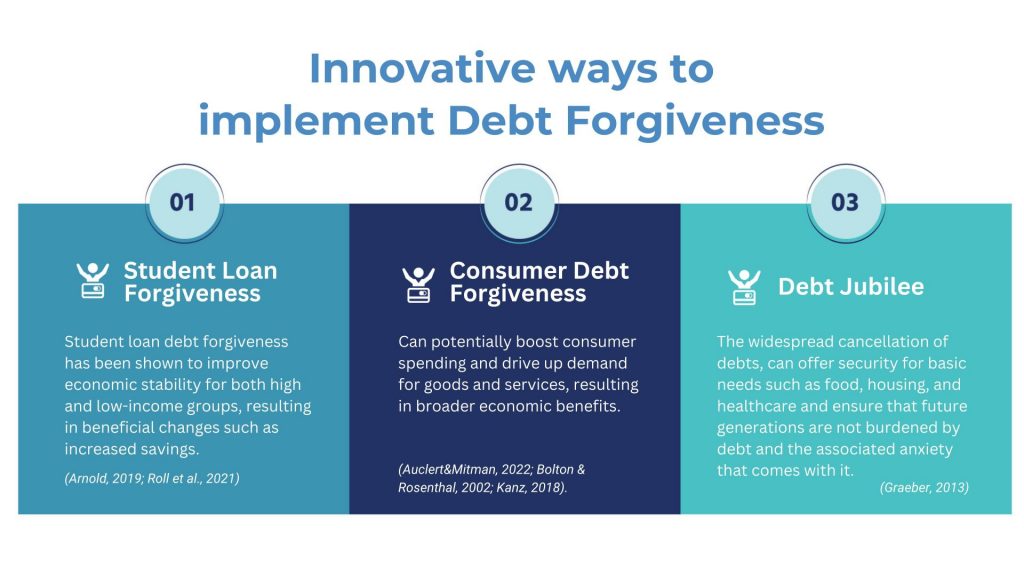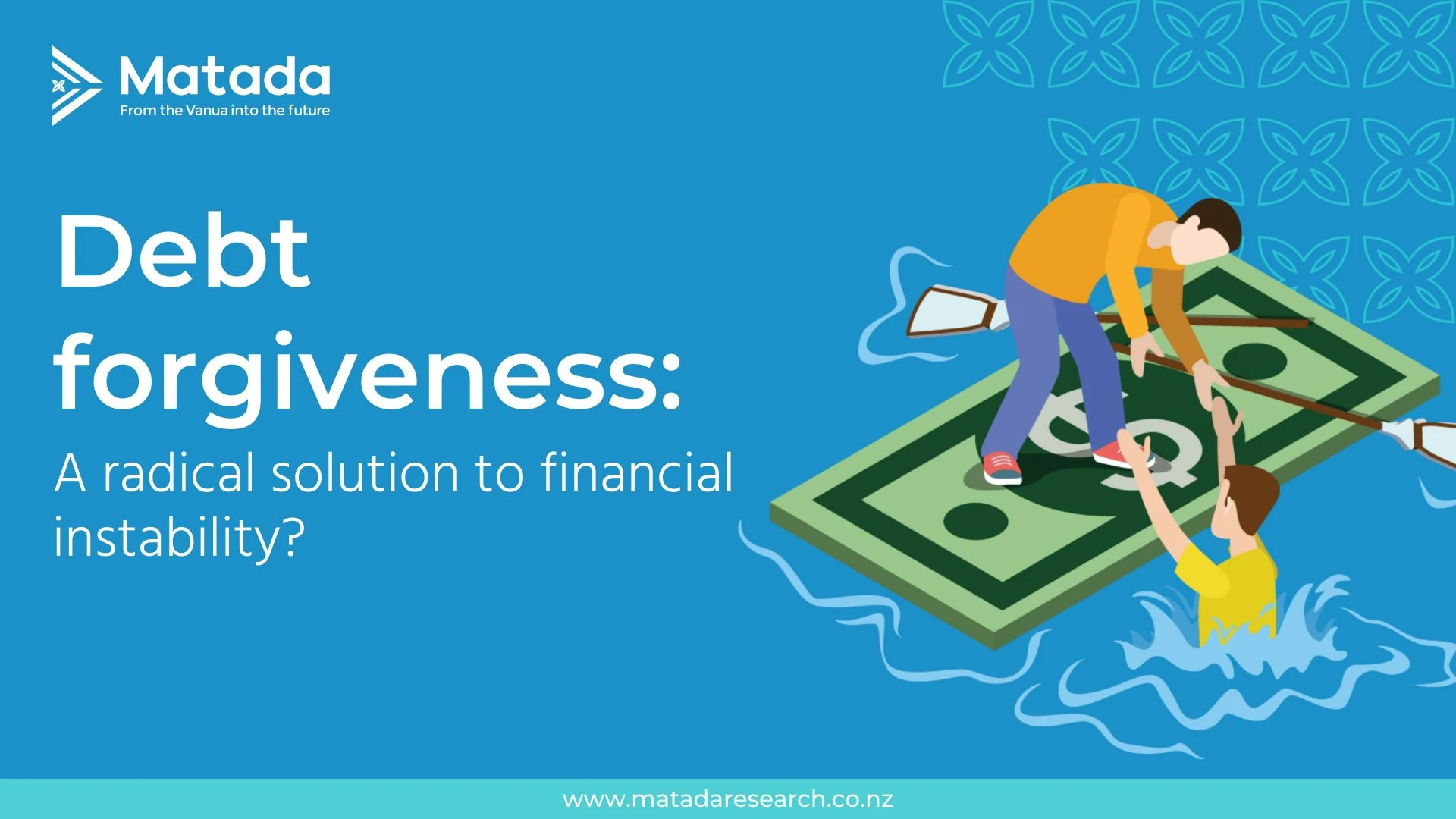Debt is an omnipresent reality in modern societies. Whether it is consumer debt, student loans, or government debt, many people and institutions are burdened by it. The burden of debt can have severe consequences for individuals and communities, leading to bankruptcy, homelessness, and even political instability. Debt forgiveness is an idea that has been around for centuries, and it is gaining traction in contemporary discussions about economic justice and social welfare. In this blog post, we will explore what debt forgiveness is, why it is important, innovative ways it can be implemented, and the current advantages and disadvantages of such programs.
What is debt forgiveness?
Debt forgiveness is a process by which a lender cancels all or part of a borrower’s debt. It is also known as debt relief, debt cancellation, or debt discharge. Debt forgiveness can occur in various ways, including through bankruptcy, debt settlement, debt consolidation, or a debt jubilee. In bankruptcy, for example, a court may discharge some or all of a borrower’s debt, depending on their income and assets. Debt settlement involves negotiating with creditors to pay a reduced amount of the total debt owed. Debt consolidation is the process of combining multiple debts into a single loan with a lower interest rate. A debt jubilee is a more radical approach to debt forgiveness, where a society-wide cancellation of debts occurs.
Research conducted by the International Monetary Fund (IMF) in 2012 on developed economies suggests that severe and prolonged housing busts and recessions are more likely to be caused by household debt. The IMF also recommends that government policies, such as debt forgiveness, especially those targeting excessive household debts, can significantly reduce debt burdens and prevent household defaults and foreclosures. In addition, recent studies by Auclert and Mitman (2022) and Bolton and Rosenthal (2002) have found that government debt relief programs can stimulate the economy by increasing demand, consumption, and overall welfare, as they help to fulfil incomplete debt contracts.
Why is debt forgiveness important?
Debt forgiveness is crucial as it can alleviate the burden of debt on individuals, families, and communities. The weight of debt can prevent people from meeting their basic needs, including food, housing, and healthcare, and can also lead to psychological stress, marital conflict, and social isolation. Additionally, debt can act as a barrier to economic growth by limiting individuals’ capacity to invest in their education, start a business, or purchase a home. Through debt forgiveness, people can be granted a fresh start, allowing them to rebuild their lives.
Research by Hiilamo (2020), Sweet et al. (2013), Tinson and Bunbury (2022), and Turunen and Hiilamo (2014) provides substantial evidence suggesting that debt or indebtedness can have severe adverse effects on debtors’ health and wellbeing. For instance, individuals who are under debt or unmet loan payments have a higher likelihood of experiencing suicidal ideation. Furthermore, individuals with debt are more prone to mental health conditions such as depression when compared to those without financial difficulties (Turunen & Hiilamo, 2014).
Debt forgiveness has the potential to yield positive changes for the economy and society, benefiting even those without debt (International Monetary Fund, 2012). There are multiple reasons why it can be advantageous. Firstly, it can spur economic growth by freeing individuals from debt, enabling them to have more disposable income for spending on goods and services (Auclert & Mitman, 2022). This spending surge can create jobs and bolster the economy. Secondly, debt forgiveness can reduce income inequality, especially for low-income individuals and communities. Thirdly, some view debt forgiveness as a moral obligation to aid those struggling with debt. Lastly, forgiving debt can alleviate stress and anxiety related to debt, thereby promoting positive mental health and well-being (Ong et al., 2018).

Innovative ways to implement debt forgiveness
There are many innovative ways to implement debt forgiveness. Here are a few examples:
Student Loan Forgiveness: In recent years, the idea of student loan forgiveness has gained significant popularity. This proposal would involve the government cancelling some or all of the student loan debt owed by millions of Americans. The reasoning behind this proposal is rooted in the belief that student loan debt acts as a barrier to both economic growth and social mobility. With a large number of young people burdened by student loan debt, their ability to invest in their education, start a business or purchase a home is limited. The forgiveness of this debt by the government could help to stimulate economic growth and increase social mobility. In fact, studies (Arnold, 2019; Roll et al., 2021) have shown that student loan debt forgiveness can benefit both high and low-income groups, leading to changes in behaviors such as an increase in savings for house purchase and emergencies, indicating high levels of household economic stability.
Consumer debt forgiveness: Consumer debt forgiveness encompasses various types of debt relief, such as credit card, mortgage, and car loan forgiveness. By forgiving a portion or all of a borrower’s debt, lenders offer them a chance to begin anew and alleviate the financial burden that has been impeding their progress. This approach can potentially boost consumer spending and drive up demand for goods and services, resulting in broader economic benefits (Auclert & Mitman, 2022; Bolton & Rosenthal, 2002; Kanz, 2018).
Debt Jubilee: A debt jubilee involves the widespread cancellation of debts, and is a radical approach to debt forgiveness that has a long history dating back to ancient times. This concept was used as a means to address economic inequality and social injustice. Under a debt jubilee, all forms of debt, including government, corporate, and individual debt, would be cancelled, providing a fresh start for everyone. While this idea may seem radical, proponents argue that it could be a solution to our current economic and social problems. Graeber (2013) suggests that while mass debt cancellation cannot guarantee a continual economic expansion, it can offer security for basic needs such as food, housing, and healthcare. Furthermore, debt jubilees can ensure that future generations are not burdened by debt and the associated anxiety that comes with it (Graeber, 2013).

Advantages and disadvantages of debt forgiveness
There are both advantages and disadvantages to debt forgiveness, which are discussed below.
Advantages of Debt Forgiveness
Reduced financial burden: Debt forgiveness offers a solution to borrowers grappling with an insurmountable financial burden. By reducing or eliminating their debts, borrowers can alleviate their financial strain, allowing them to redirect their resources towards other essential expenses such as food, housing, and healthcare. For instance, studies conducted by Arnold (2019) and Roll et al. (2021) have found that student loan or debt forgiveness can significantly reduce the financial burdens on students, thereby positively impacting their life trajectories. This includes increased savings, the ability to save for a home purchase, and increased savings for emergency situations.
Positive economic impact: Debt forgiveness can have a positive economic impact by freeing up resources for investment or consumption, thereby stimulating economic growth and increasing employment opportunities (Auclert & Mitman, 2022). Research suggests that debt relief programs not only boost aggregate demand but also reduce unemployment during recessions. For example, a study in the United States found that during the Great Recession of 2008-2009, states that received higher levels of debt relief experienced a greater boost in aggregate demand than states that did not receive as much debt relief. Additionally, the study revealed that debt relief could have reduced unemployment levels by 7.5% if states had received it.
Disadvantages of Debt Forgiveness:
Moral hazard: Debt forgiveness has the potential to create a moral hazard, where borrowers may become more prone to taking on additional debt with the expectation that it will be forgiven in the future. This can result in irresponsible borrowing and lending practices, which can have serious consequences. For instance, if a government provides debt relief, it could lead to larger losses for creditors and lenders, who may become hesitant to lend as a result. Furthermore, such debt relief can encourage lenders to be less careful when screening risky borrowers, which can exacerbate the problem of moral hazard (Indarte, 2022).
Loss of income for lenders: Debt forgiveness can have negative consequences for lenders, potentially impacting their capacity to lend to other borrowers or maintain their business operations. Research conducted by Indarte (2022) revealed that even small deviations in bailout exposure can result in significant declines in loan performance and credit allocation. Specifically, the study found that in countries like India and the USA, a slight increase in exposure led to a 4-6% decrease in the number of loans and a 13-16% decline in the amount of outstanding credit, indicating losses for lenders.
Unequal treatment: Debt forgiveness can create a sense of unfairness among those who have paid off their debts or who have been unable to receive debt forgiveness. This can lead to resentment and social tension.

Conclusion
Debt forgiveness can be a useful tool for helping borrowers struggling under the weight of overwhelming debt. It can reduce financial burdens, stimulate economic growth, and provide to those in need. However, is not without its drawbacks. forgiveness has the potential to lead to moral hazard and unequally distribute resources or losses among creditors or lenders. As such, any decision regarding debt relief needs to be carefully considered with an awareness of both the advantages and disadvantages that come along with it. Potentially, innovative solutions for debt forgiveness could include data-driven debt assessment, skill-based repayment programs, community-based initiatives, and tech-enabled tools, to alleviate financial instability. Ultimately, if debt relief programs are implemented thoughtfully and responsibly, they can help ensure that future generations are not burdened by debt and the associated anxiety that comes with it.
References
Adams, A. S., Kluender, R., Mahoney, N., Wang, J., Wong, F., & Yin, W. (2021). The impact of financial assistance programs on health care utilization. American Economic Review, 4(3), 389-407. https://www.nber.org/papers/w29227
Arnold, C. (2019, November 25). Forgiving student debt would boost economy, economists say. National Public Radio. https://www.npr.org/2019/11/25/782070151/forgiving-student-debt-would-boost-economy
Auclert, A., & Mitman, K. (2022). The macroeconomics of household debt relief. https://web.stanford.edu/~aauclert/debt_relief_policy_paper.pdf
Bolton, P., & Rosenthal, H. (2002). Political intervention in debt contracts. Journal of Political Economy, 110(5), 1103-1134. https://doi.org/10.1086/341867
Gine, X., & Kanz, M. (2016). The economic effects of a borrower bailout: Evidence from an emerging market. World Bank Policy Research (Working Paper No. 7109). https://papers.ssrn.com/sol3/papers.cfm?abstract_id=2524163
Graeber, D. (2013). After the jubilee. http://www.e-flux.com/wp-content/uploads/2013/05/2.-Graeber_afterJubilee.pdf
Hiilamo, A. (2014). Debt matters? Mental wellbeing of older adults with household debt in England. SSM-Population Health, 12, https://doi.org/10.1016/j.ssmph.2020.100658
Indarte, S. (2022). The costs and benefits of household debt relief. https://sashaindarte.github.io/research/si_INET_debt_relief.pdf
International Monetary Fund [IMF]. (2012). Dealing with household debt.
Kanz, M. (2018). What does debt relief do for development? Lessons from the largest household bailout in history. https://pubdocs.worldbank.org/en/138471541446850108/Debt-Relief.pdf
Ong, Q., Theseira, W., & Ng, I. Y. H. (2018). Reducing debt improves psychological functioning and changes decision-making in the poor. PNAS, 116(15), 7244-7249. https://doi.org/10.1073/pnas.1810901116
Roll, S., Jabbari, J., & Grinstein-Weiss, M. (2021). Student debt forgiveness would impact nearly every aspect of people’s lives. Brookings Institution. https://www.brookings.edu/blog/up-front/2021/05/18/student-debt-forgiveness-would-impact-nearly-every-aspect-of-peoples-lives/
Simmons-Duffin, S. (2022, April 14). What the White House’s actions on medical debt could mean for consumers. National Public Radio [NPR]. https://www.npr.org/sections/health-shots/2022/04/14/1092740251/what-the-white-houses-actions-on-medical-debt-could-mean-for-consumers
Sweet, E., Nandi, A., Adam, E., & McDade, T. (2013). The high price of debt: Household financial debt and its impact on mental and physical health. Soc Sci Med, 91, 94-100. https://doi.org/10.1016%2Fj.socscimed.2013.05.009
Tinson, A., & Bunbury, S. (2022). Debt and health: Preventing ‘problem debt’ during the pandemic recovery. The Health Foundation. https://www.health.org.uk/sites/default/files/pdf/2022-02/2022%20-%20Debt%20and%20health.pdf
Turunen, E., & Hiilamo, H. (2014). Health effects of indebtedness: A systematic review. BMC Public Health, 489. https://bmcpublichealth.biomedcentral.com/articles/10.1186/1471-2458-14-489


